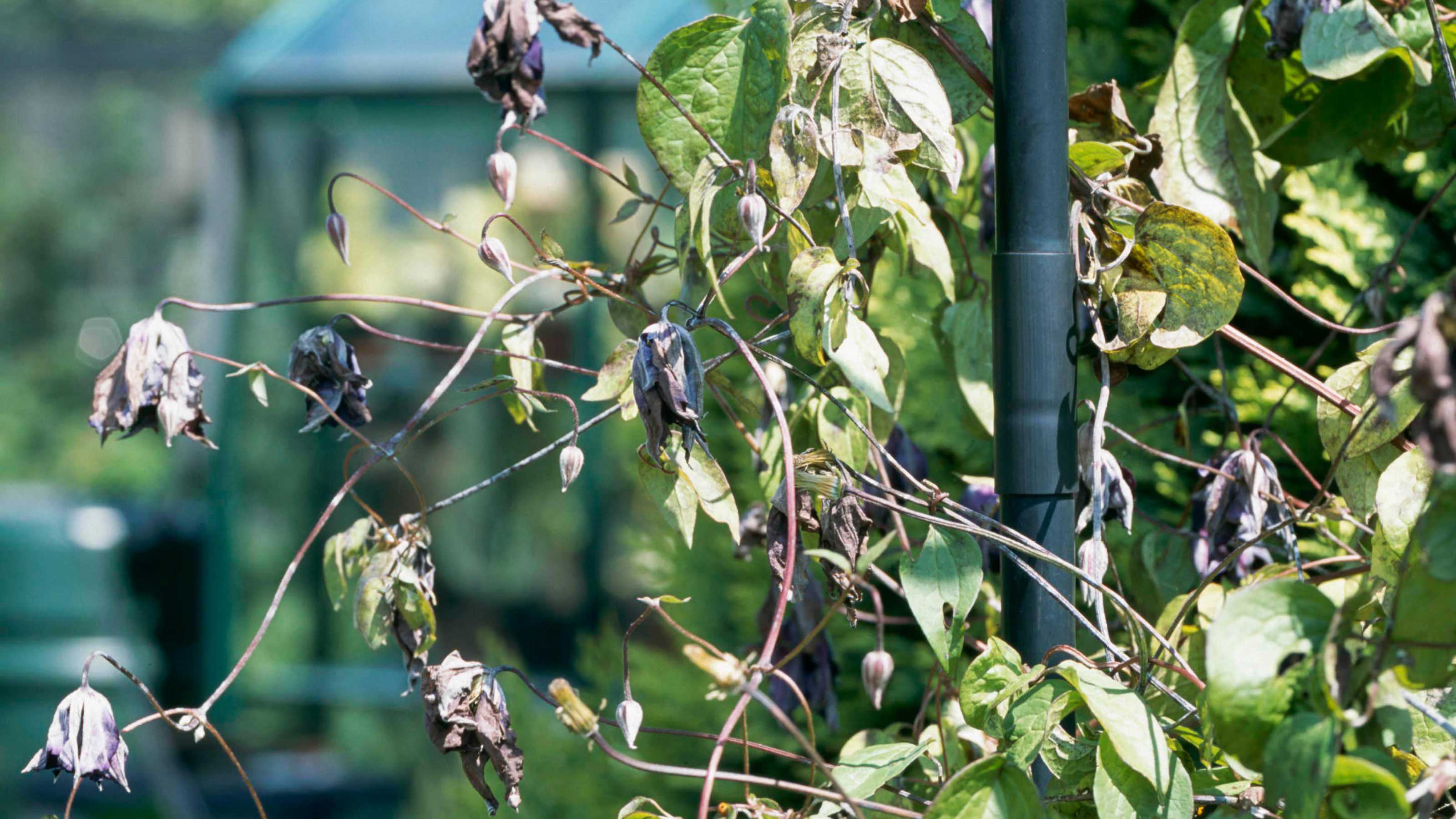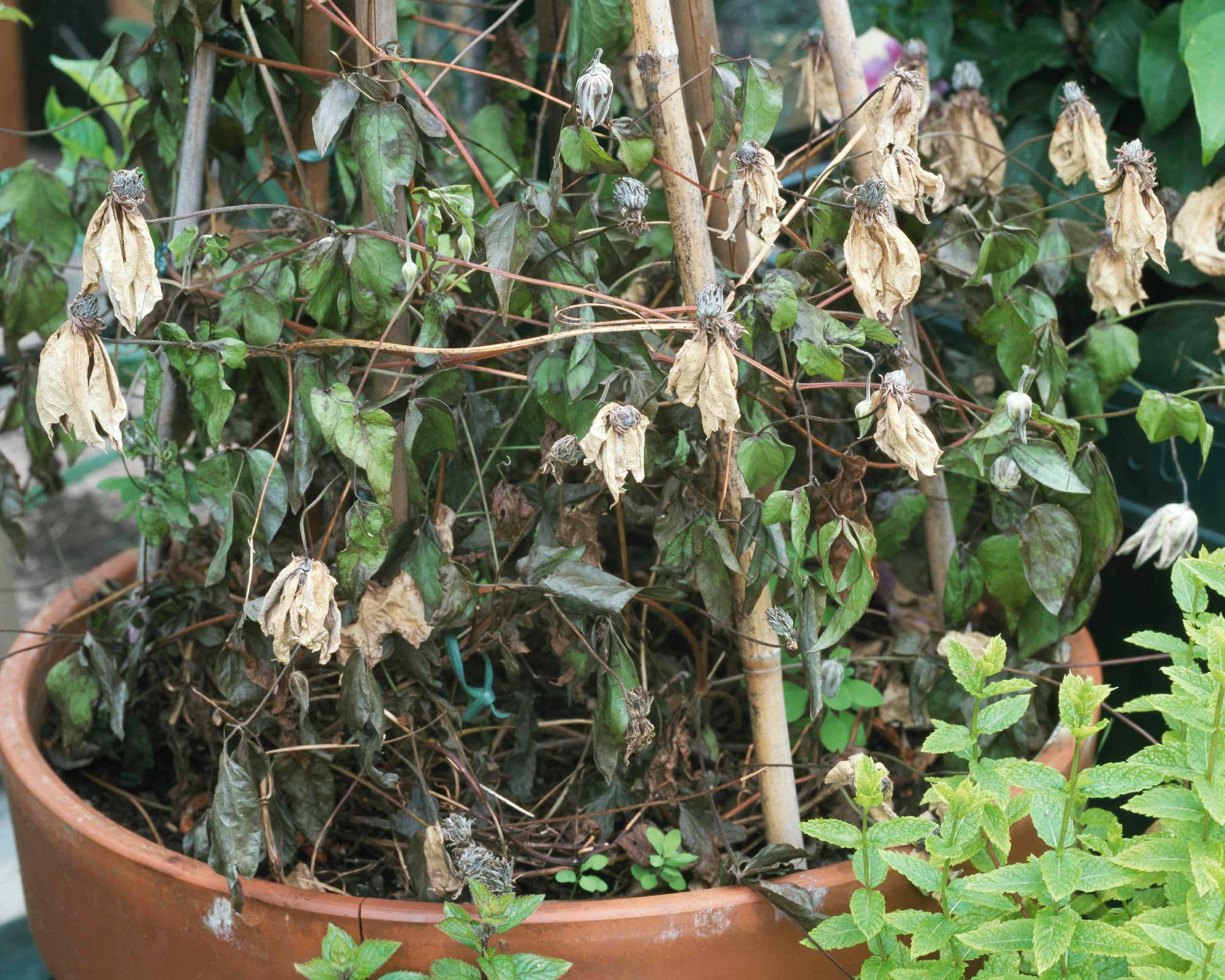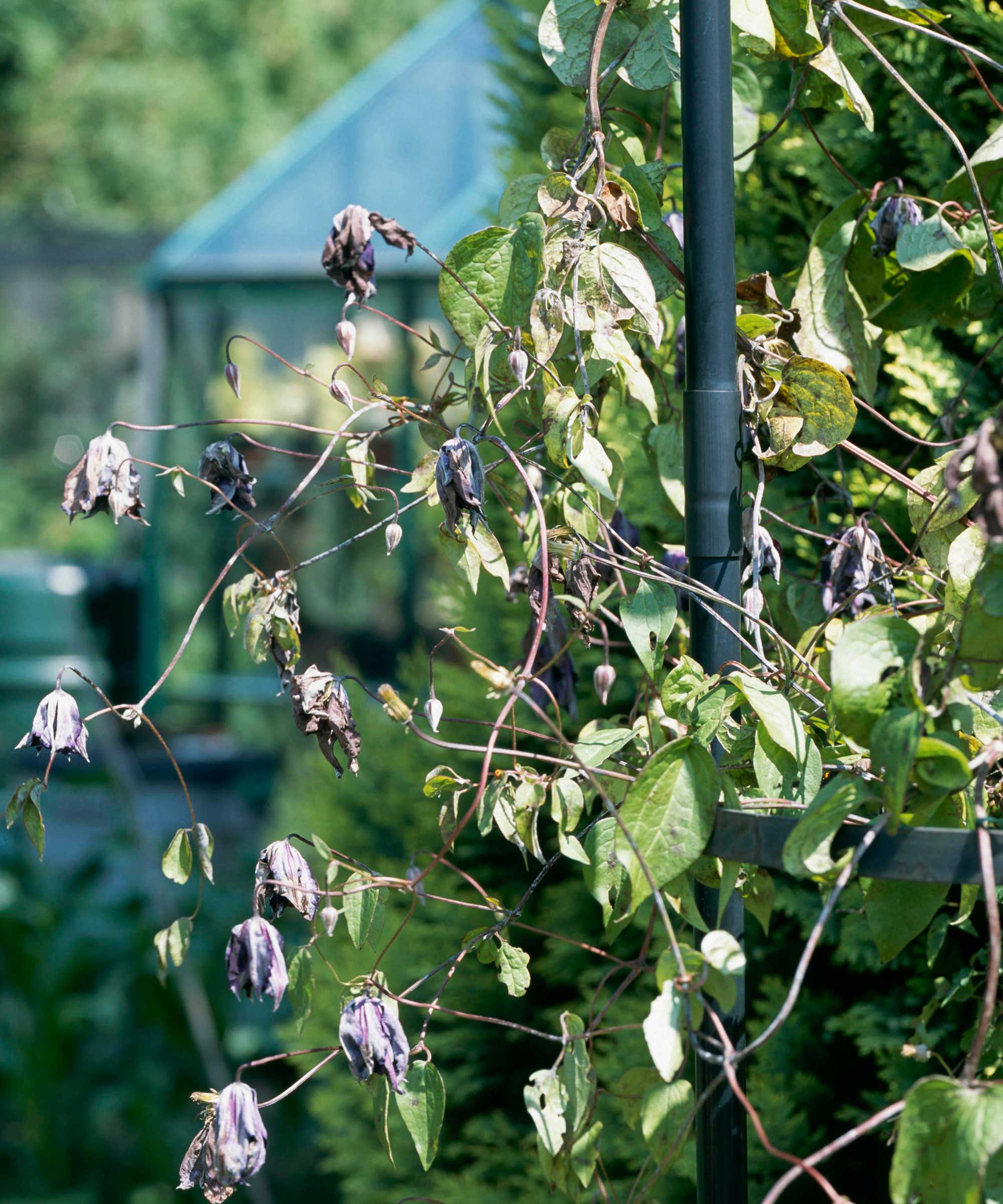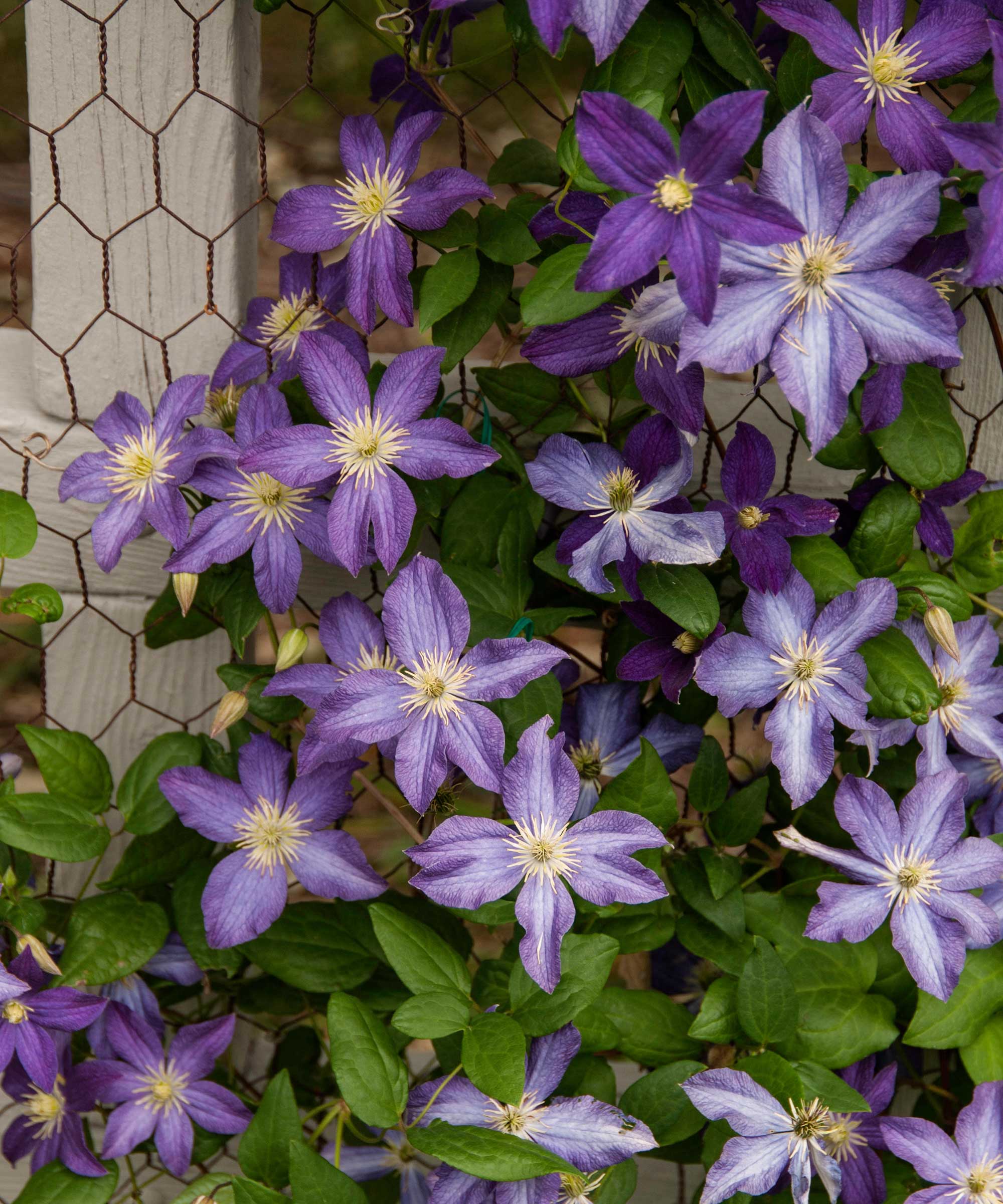Clematis wilt: how to identify and treat this fungal plant disease
Our expert tips on clematis wilt will help keep your climbers in top condition


Has your climber succumbed to clematis wilt? This debilitating disease is caused by the fungus Calophoma clematidina and will quickly spread throughout the plant, causing it to collapse. As with most plant diseases, if you spot it, it's best to take action quickly.
Clematis plants are a beautiful addition to a garden. Kept in top condition, these climbers will happily sprawl up walls and trellises, or wrap around pergolas, resulting in an impressive screen of blooms. Not only does this bring color and interest to otherwise blank backdrops, but it can also be valuable in boosting the sense of privacy in a plot. Some varieties are great at attracting pollinators, too, and can also provide shelter for nesting birds.
To help you keep yours looking its best, we've rounded up all the expert advice you need on dealing with clematis wilt. With these tips, you'll know what to look for and what actions to take to recover your precious plants.
How to identity clematis wilt
One of the signs to look out for when identifying clematis wilt is black spots on the leaves and, if you split it open, inside the stem tissue. The leaves can also shrivel up, and following leaf infection, stems will collapse.
However, it's important to note that wilting in general can also be caused by environmental stress rather than fungal disease. For instance, if your clematis is too exposed or planted in shallow, dry soil it can grow poorly, as explains the RHS. Keep it well-watered and the roots cool – mulching can help with this. Pruning clematis correctly will also help keep it healthy.
What's more, slugs and snails commonly cause damage to these plants – so it's worth reading up on how to get rid of slugs to protect them.

Clematis wilt on 'Pistachio'
How to prevent clematis wilt
Regrettably, there is no chemical clematis wilt treatment available, as explains John Negus, a gardening expert from Amateur Gardening. 'All you can do is cut back diseased stems to ground level and bin or burn infected shoots.' Composting them isn't recommended.
'If there are several diseased shoots that need cutting out, disinfect your secateurs between removing each of them,' he adds. You should also clean them after the job is done, to prevent spreading the disease to other, healthy plants.
Don't worry that your clematis is gone for good, though – these plants often bounce back after a bout of clematis wilt. 'Pleasingly, the fungus does not kill the plant and new shoots will appear from below the soil surface within six weeks or so,' reassures John.
John also suggests planting clematis 6in (15cm) deeper than it is in its pot. 'The plant responds by producing several stems. Then, if one collapses overnight from wilt and you cut it back to near ground level, remaining stems continue to develop strongly.'
If you decide to replace affected plants with new clematis, it's a good idea to work mycorrhizal fungi – available on Amazon – into the root area to speed up robust growth, he adds. This will help the new plants avoid replant disease.

This 'Viola' clematis is showing signs of wilt
Are there any types of clematis that are resistant to clematis wilt?
When choosing your climbing plants, consider opting for varieties that are less susceptible to clematis wilt. The RHS says how smaller-flowered species seem to be more resistant, while John adds that varieties of viticella, montana, and alpina are normally safe bets. 'Avant Garde' with its deep pink flowers or the purple-bloomed 'Bonanza' can make good choices, both of which are stunning.
Some of the clematis varieties with larger flowers, on the other hand, are very susceptible, adds the RHS. These include 'Duchess of Edinburgh' (white flowers), 'Jackmanii' (deep purple), and 'Nelly Moser' (lilac with pink stripes). Avoid these for an easier gardening life.

Clematis 'Bonanza' is more resistant to the fungal disease

The garden was always a big part of Holly's life growing up, as was the surrounding New Forest where she lived. Her appreciation for the great outdoors has only grown since then. She's been an allotment keeper, a professional gardener, and a botanical illustrator – plants are her passion.
